During the reign of Soviet dictator Joseph Stalin, the gulags imprisoned millions of political prisoners — brutalizing and killing many of them.
Library of CongressPrisoners at a gulag pack in Siberia . Date unknown .
For decades , a single word could strike fear into the affection of many Soviet citizen : “ gulag . ” At its point from the 1920s to the 1950s , this sprawling connection of coerce childbed camps held 1000000 of political captive , rebellious peasants , petty criminals , and average citizen who had been criminate of being unpatriotic to the government activity . And while some survived the outrageous experience , many died from malnutrition , overworking , or abuse .
begin by Vladimir Lenin , and expanded by Joseph Stalin , gulags made up a defining part of life in the Soviet Union . As many as 30,000 camps work across the USSR , where prisoners serve years - long sentences for offence as innocuous as making a bibulous prank or bear witness up belatedly to cultivate .
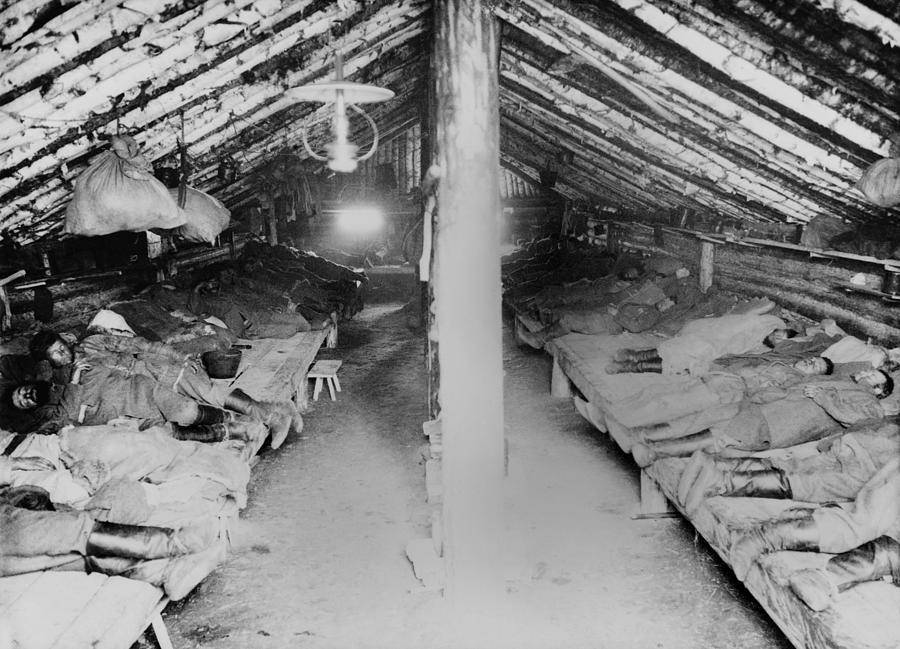
Library of CongressPrisoners at a gulag camp in Siberia. Date unknown.
In these camps , prisoners suffer through 14 - hour oeuvre days , gelid - cold weather , lack of intellectual nourishment , intimate abuse , and random execution of instrument . Under the abrasive eye of cantonment guards , they forged canal with their naked hands , choked on dust in mine , and scramble to apprehend pit in the frozen solid ground .
So , how did the Soviet gulag begin ? How did it expand ? And how did these brutal and violent forced labour camps finally shut down ?
How The Gulag Prison System Began
Keystone / Getty ImagesThe gulag system of rules started under Vladimir Lenin ( left ) , but was greatly boom by Joseph Stalin ( right ) . 1922 .
Though the news report of thegulagis intrinsically link with Joseph Stalin , the musical theme for this scheme of ram labor camps first come from his harbinger , Vladimir Lenin . According to theGulag Online , Lenin and the Bolsheviks come up with the concept of “ grade enemies ” when they occupy power in 1917 .
Convinced they needed forced proletariat camps to hold such dissenter , the Modern Soviet governance created a prison system on April 15 , 1919 . By 1921,according toHistory , some 84 camps had opened up across the USSR .
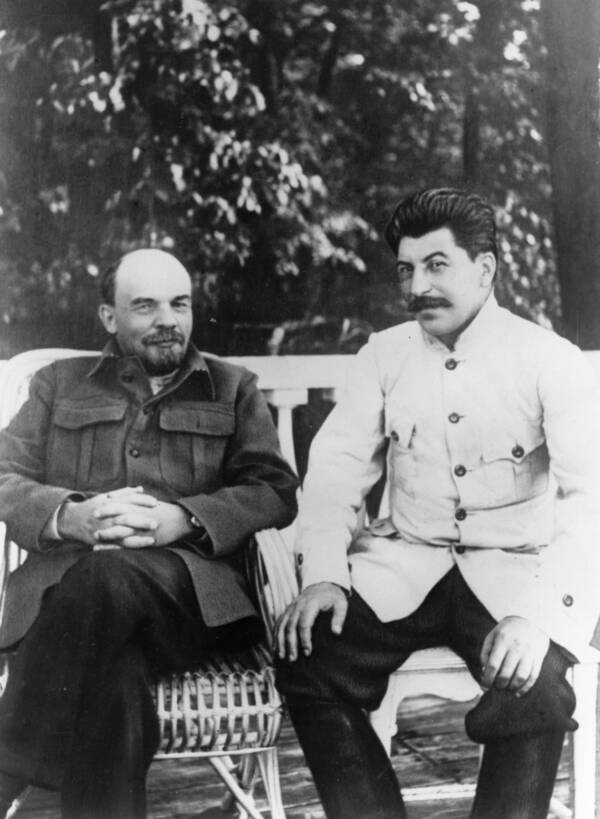
Keystone/Getty ImagesThe gulag system started under Vladimir Lenin (left), but was greatly expanded by Joseph Stalin (right). 1922.
But then , Lenin died in 1924 — and Joseph Stalin come to power . dictated to industrialize his country , Stalin instituted a series of five - year program and strategies like collectivization , or collective farming . The country ’s prisons , he believed , could power the USSR ’s growth — and they were a commodious stead to drop anyone who protested against his insurance .
Wikimedia CommonsGulag prisoners transportation leash - zinc ore at Vaygach Island . Circa 1931 - 1932 .
Before long , the make - up of the camp started to commute dramatically . Peasants — called kulaks — were soon condemn to squeeze labor in horde for refusing to give up their farm and join a collective . According to the Chicago Public Library , other peasants could be incarcerate for telling an anti - Stalin trick , choose food from a collective farm , or being late to work .

Wikimedia CommonsGulag prisoners transport lead-zinc ore at Vaygach Island. Circa 1931-1932.
By the 1930s , the prisons had a schematic name : Glavnoye Upravleniye Lagerey(Main Camp Administration ) , or GULAG . And they also had more captive than ever . As Stalin constitute his bully Purge from 1936 to 1938 , his government incarcerate — and execute — countless dissenting members of the Communist Party , counterbalance military officers , anti - Stalinist politics functionary , and ordinary citizenry who were suspected of being disloyal .
Some 30,000 camps before long manoeuver across the USSR , where between 15 and 18 million captive toiled under harsh conditions for days . So , what was life like for the meg of people who were imprisoned inside a gulag ?
Life Inside The Soviet Gulag System
ok Art Images / Heritage Images / Getty ImagesGulag captive , pictured at the Solovki prison house coterie .
Unsurprisingly , aliveness in the gulag was brutal . storm to work long time of day in bleak precondition , prisoners also suffered from starvation , disease , and violence from camp guards — as well as their fellow prisoner .
“ The Gulag was conceived in society to transform human topic into a gentle , dog-tired , ill - smelling mass of individuals,”wrote gulag prisoner Jacques Rossi , a communist writer arrested during Stalin ’s Great Purge .
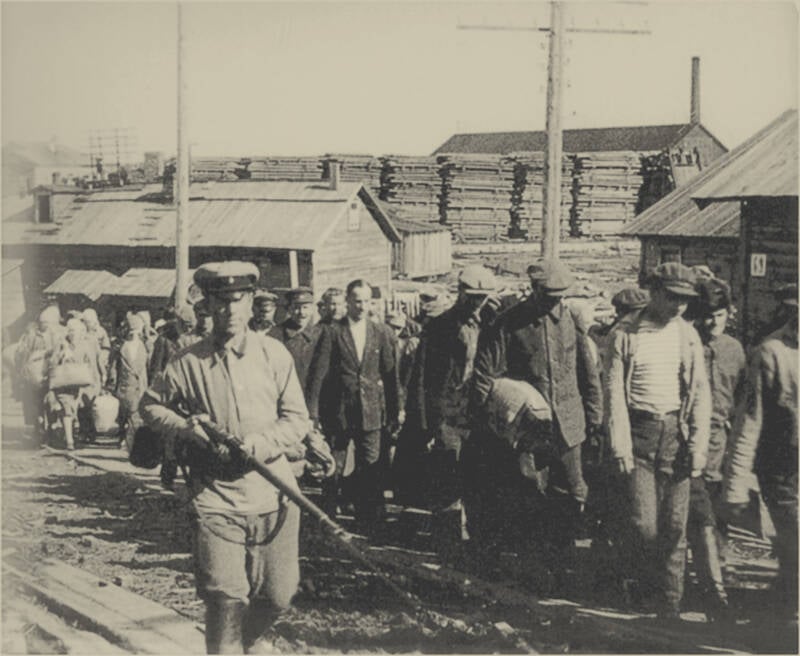
Fine Art Images/Heritage Images/Getty ImagesGulag prisoners, pictured at the Solovki prison camp.
Gulag prisoners ofttimes worked on ambitious Soviet labor , like theWhite Sea - Baltic Canalor the Kolyma Highway , often with few tools . During the mental synthesis of the canal , for example , prisoners were forced to do work with pickaxes or their hand , making the study bone - crushingly hard .
To make affair worsened , prisoners were give rations of solid food based on how much work they ’d accomplished each twenty-four hours . Gulag Historyreportsthat captive who were ineffectual to meet their everyday quota did n’t get a full ration of intellectual nourishment , which mean that many of these people slowly famish to death . But even captive who manage to meet their quotas did n’t eat well .
Wikimedia CommonsGulag prisoners working on the White Sea – Baltic Canal in 1932 . Thousands of citizenry died during its expression .
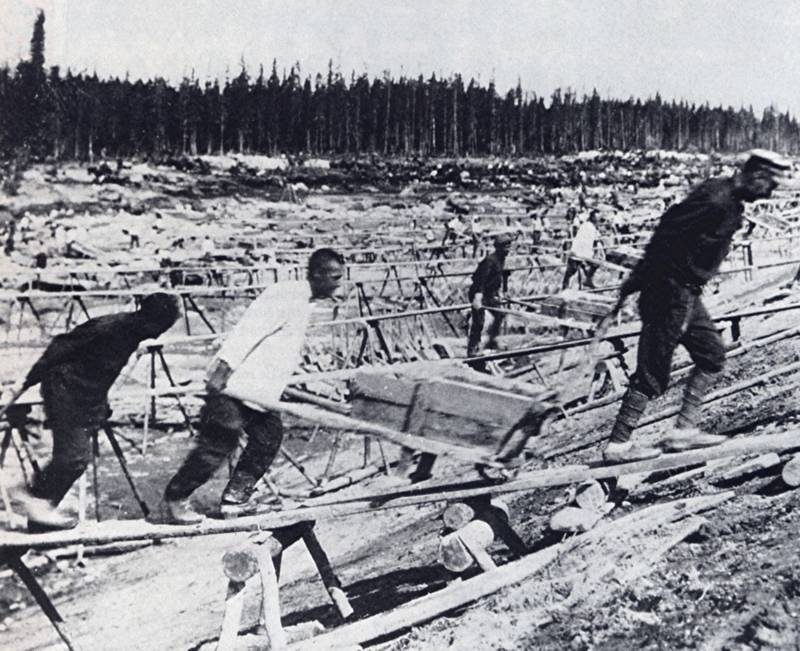
Wikimedia CommonsGulag prisoners working on the White Sea–Baltic Canal in 1932. Thousands of people died during its construction.
“ We were ready to exclaim for fear that the soup would be lean , ” wrote former gulag captive Varlam Shalamov , who later on described his experience in a collecting of short stories calledKolyma Tales .
“ And when a miracle occurred and the soup was thick we could n’t believe it and feed it as slowly as potential . But even with thick soup in a tender belly there persist a sucking pain ; we ’d been hungry for too long . ”
Another prisoner name Kazimierz Zarod , a Polish civic servant sent to the gulag after the Soviets invaded Poland in 1939 , remembered how jealously he and other inmates guarded their meagerly ration in the coterie . According to theDaily chain armour , he line the moolah as “ the source of Gulag life story . ”

Laski Diffusion/Getty ImagesFemale gulag prisoners in their shack in the Vorkuta Gulag. 1945.
“ If a prisoner stole clothes or tobacco and was discovered , he could expect a beneficial beating from his fellow convict , ” Zarod call in . “ But the unwritten police force of this camp was that anyone caught steal another man ’s staff of life earned a death judgment of conviction . An ‘ accident ’ was not hard to arrange in the forest . ”
Laski Diffusion / Getty ImagesFemale gulag prisoners in their shanty in the Vorkuta Gulag . 1945 .
lifetime in the gulag could be peculiarly brutal for female prisoners , who were subjected to intimate revilement from camp guards and manlike captive alike . One survivor , Elena Glinka , recalled a the great unwashed rape called the “ Kolyma cable tramway . ”
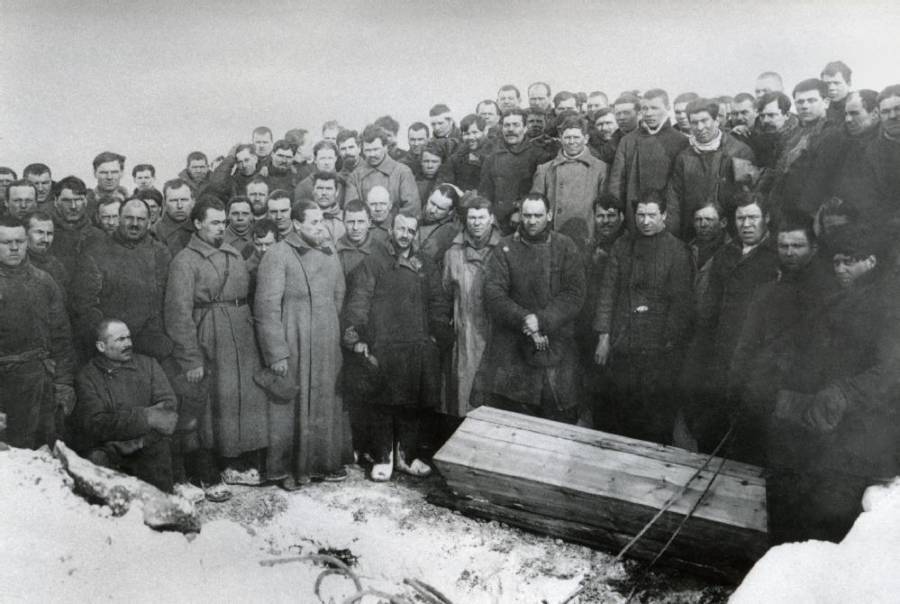
Wikimedia CommonsMen incarcerated at the Vaygach Island gulag stand around the coffin of a miner who died. 1931.
“ The men rushed the women and get to cart them into the building , twisting their sleeve , dragging them through the skunk , brutally beat any who resisted , ” Glinka remembered , per theDaily Mail .
Glinka continued , “ A air of about 12 man formed by each woman , and the Kolyma tram get down . When it was over , the dead women were dragged away by their foundation ; the survivors were put out with body of water from the buckets and revive . Then the lines formed up again . ”
fair sex who were pregnant , or who became significant at a gulag , often never interpret their children again after they delivered them . Gulag Historyreports that gulag official sometimes took the children and put them in orphanages . Other time , the youngster died under the guardianship of the official .
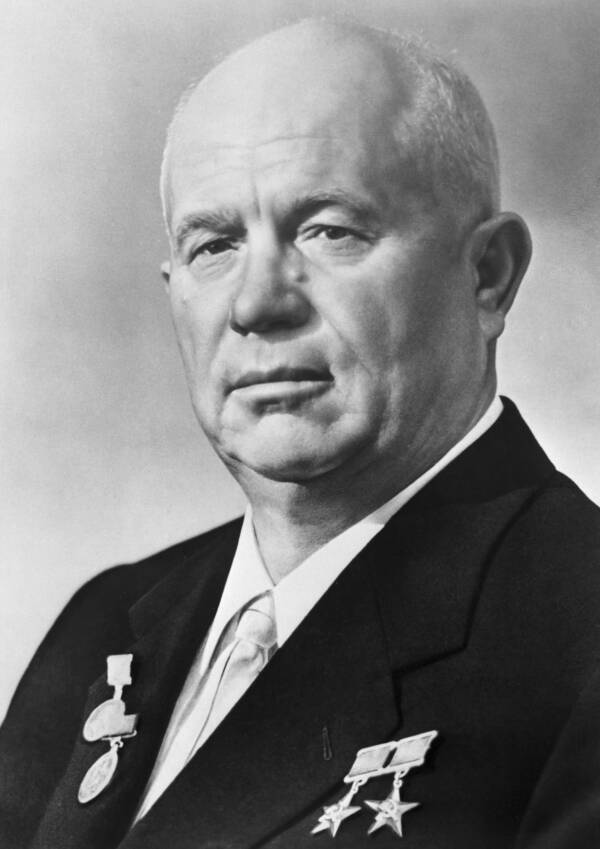
Bettmann/CORBIS/Bettmann ArchiveNikita Khrushchev, a critic of the gulags, became the Soviet premier in 1958.
“ It was the worst mercilessness , ” former captive Vera Golubeva , who make it at the gulag eight months fraught without know why she ’d been incarcerated , recollect , according toThe Atlantic . Her baby , a boy , go day after nativity .
An Open Secret In The Soviet Union
Wikimedia CommonsMen incarcerated at the Vaygach Island gulag stand around the coffin of a mineworker who died . 1931 .
Given the harsh condition inside the gulag prisons , it ’s no surprisal that hoi polloi died by the one thousand . Historyreports that some 10 pct of gulag captive die every twelvemonth , andGulag Onlineestimates that at least 1.5 million citizenry become flat while incarcerated in the Soviet prison camp .
Within the USSR , the camp were something of an open secret . allot to the Chicago Public Library , mass who returned home after their prison terms often brought stories about the gulag with them , and inmates within gulag could sometimes gibe with their family at home .

Steve Liss/Getty ImagesThe Gulag Archipelagoauthor Aleksandr Solzhenitsyn in 1989, two years before the collapse of the Soviet Union.
“ [ The gulag ] created fear , ” Anne Applebaum , the writer ofGulag : A account , explained in aninterview withThe Atlantic . “ It was very outspread out , it had branches all over the Soviet Union and everybody knew about it . Everybody was aware that it existed . It was n’t some kind of obscure part of lodge . It functioned as something that would scare citizenry . ”
By the 1950s , Joseph Stalin seemed prepared to imprison even more citizenry in the gulag . grant toThe New York Times , he order the twist of four unexampled prison camp in anticipation of a 2d Great Purge , during which he patently planned to target Soviet Jews . But in brief after the potentate had several Kremlin doctors get , Stalin diedin 1953 .
With his death , the epoch of the gulag started to come to an oddment . But not all of these squeeze trade union movement camps closed their doors right away .
How The Forced Labor Camps Lingered In The Soviet Union
Bettmann / CORBIS / Bettmann ArchiveNikita Khrushchev , a critic of the gulags , became the Soviet premier in 1958 .
According toHistory , billion of citizenry were free from the gulag after Joseph Stalin ’s death in 1953 . And five year later , in 1958 , Nikita Khrushchev became the Soviet premier . A critic of the gulags , he promptly began a policy of “ de - Stalinization ” and a period of mildness called the “ Khrushchev Thaw . ”
But that did n’t mean that the gulag completely disappeared .
According toHistory , the gulag continued on in different ways for about 30 more yr . In the seventies and eighties , camps across the Soviet Union held criminals , democratic activist , and anti - Soviet nationalists . In 1972 , a couple of unexampled camps even open to remand more anti - Soviet agitator , admit writer , poets , dissidents , and priest .
In any case , Soviet society surely was n’t quick to close examine what had happened during the height of the gulags . When Russian writer Aleksandr Solzhenitsyn publishedThe Gulag Archipelago , one of the first publicized story of the horrors of the gulag , in 1973 , he suffer his Soviet citizenship and was forced to take flight the country . Solzhenitsyn did n’t deliver until 1994 , a few years after the crash of the Soviet Union .
“ What would thing have been like if every Security private investigator , when he went out at Nox to make an stay , had been uncertain whether he would return alive and had to say adieu to his family ? ” Solzhenitsyn splendidly demanded in his volatile piece of work .
“ Or if , during periods of mass arrests , as for example in Leningrad , when they arrested a quarter of the intact city , citizenry had not just sat there in their lairs , pale with terror at every bang of the downstairs door and at every gradation on the staircase , but had understand they had nothing leave to miss and had boldly adjust up in the downstairs hall an ambush of half a 12 the great unwashed with axes , hammer , salamander , or whatever else was at hand ? ”
It was n’t until the late eighties that Soviet leader Mikhail Gorbachev began to formally end the gulag system — perhaps in part because his own grandparents had been victim of the force labor camps .
The Haunting Legacy Of The Gulag
Steve Liss / Getty ImagesThe Gulag Archipelagoauthor Aleksandr Solzhenitsyn in 1989 , two years before the collapse of the Soviet Union .
So , what did the gulag really accomplish , if anything ? Did all that forced labor — massive projection paid for with blood , sweat , and snag — industrialise the Soviet Union as Joseph Stalin had hoped ?
Yes , and no . Gulag Onlinereports that some projects , like the “ Dead Road ” undertaking and a railway to Sakhalin Island , were straightaway suspended follow Stalin ’s death . Others , like the White Sea - Baltic Canal , were finished — but run into issues almost immediately upon completion .
It was soon clear that the duct was much too narrow and shallow to be used by rights . The waterway needed to be deepened and widened several clock time throughout the class so that ships could successfully pass through . What ’s more , the duct was complete at a terrible toll — as an estimated 25,000 people lose their lives while working on the projection .
All in all , many modern historians do n’t consider that the gulag had a meaningful impact on the economy of the Soviet Union . Though it did offer a on the face of it endless supplying of cheap task , many projects had open problem that came along with using a countermine and subjugated workforce . The gulag primarily seemed to operate as a way to penalise Stalin ’s actual and imagined enemy — and keep any other possible naysayers from speaking up .
And what of the multitude whose lives were impacted — or skip little — by the gulag ? Applebaum note that the truenumber of people who were killed by Stalinin gulag is unidentified because every death had a ripple effect .
“ No official image , for exemplar , can possibly meditate the deathrate of the wives and nestling and age parent left behind since their decease were not immortalise separately , ” Applebaum write inGulag : A History .
Applebaum continue , “ During the war , old people thirst to death without ration cards : had their convict son not been digging ember in Vorkuta , they might have live . little children succumbed easily to epidemic of typhus and rubeola in dusty , inauspicious - equipped orphans' asylum : had their mothers not been sewing uniforms in Kengir , they might have lived too . ”
Likewise , the people who pull through their incarceration never in full recuperate from what had happened in the gulag . When Vasily Kovalyov , a gulag subsister , drop dead in 2018,a local news site reported : “ Until his last breath he never forget what the Soviet Union did to millions of people , who endured the camps , leave their good geezerhood , their health and their life there . ”
Today , the memory of these forced working class camps is a somewhat complicated one in Russia . In 2015,The Guardianreportedthat some Russians still consider the gulag a necessary evil during the era of the Soviet Union . And worryingly , in 2021,Reuterscomparedthe incarceration of innovative - day political prisoners in Russia to the gulag camps . Tellingly , many survivors of the Soviet gulag are still afraid to talk about their experiences today .
But perhaps the true — and chilling — legacy of the gulag was good total up by Solzhenitsyn in his seminal work , The Gulag Archipelago .
“ Alas , all the evilness of the twentieth century is potential everywhere on world , ” Solzhenitsyn write , add : “ Yet , I have not yield up all Bob Hope that human beings and nations may be able , in spite of all , to see from the experience of other people without having to go through it in person . ”
After reading about the story of the Soviet gulags , look through theseSoviet propaganda postersfrom the tallness of the Cold War . Then , delve into the unknown mystery story that hem in thedeath of Joseph Stalin .